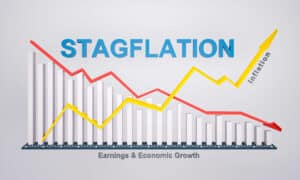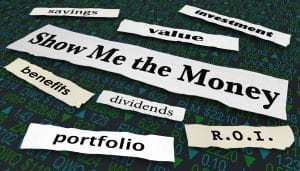
Christopher Kuehl
Managing Director • Armada
Stagflation is something that is supposed to be technically impossible. One either has slow growth or one has inflation. By definition these are supposed to be mutually exclusive. Inflation is generally driven by faster growth that creates a disconnect between supply and demand. Unfortunately, there have been periods in the past when growth has been slow and inflation has been a problem anyway. One of those times seems to be now. The growth numbers that are coming in from the US, Europe and other states are anemic and even going into the negative but inflation is still roaring along despite the efforts of the central banks to slow things down. Suddenly the worst of economic situations looms. What is a central bank to do in these circumstances? If it slows the rate hikes or reverses them the inflation issue gets much worse. If it doesn’t take its foot off the rate accelerator the risk of a significant recession increases and it seems that is already starting to happen.
The last time there was a significant threat from stagflation was in the 1970s and the remedies eventually deployed were brutal. The Nixon administration ended up imposing wage freezes and price controls to force the end of the inflation surge. That technique was intensely controversial at the time and it would be impossible to pull off today. The ingredients for a classic stagflation are still not in place but the risks are rising. The economy is showing signs of stagnating as growth numbers show. There have been predictions of negative growth in the next three quarters (although that has not been a universal opinion). If this takes place the economy will indeed meet the criteria for a recession and the main questions will be how deep and how long. The Federal Reserve has the tools needed to address a recession – throw money at it. Lower the Federal Funds rate, buy treasuries, adjust the rates that banks receive for keeping money at the Fed, mess with the reserve ratio and so on. The problem is that these moves will push inflation as it means putting more money in the economy. The Fed also has those same tools to halt inflation if they want to push hard enough. They can jack up rates the way that Paul Volcker did in the 1980s. The next time you want to panic over rates at 5.0% take a look at the Volcker years when rates soared past 20%.
Right now, there is no clear direction for the Fed or the other central banks. They can all make the argument that inflation is the scourge and they can all make the argument that growth is slowing fast enough to create economic distress. One of the missing ingredients as far as stagflation is concerned is the labor market. In the 1970s the rate of unemployment was very high. A substantial lack of growth is required for the stagnation part of stagflation. The prime driver for inflation right now is wages and that is both a problem and a good thing. The labor shortage that has been basically ignored for the last twenty years is wreaking havoc. Companies can’t find the talent they need and are overpaying so they can poach others. That is the bad part, the good part is that all of these wage hikes have left many consumers with more money and the ability to fend off inflation to a degree. The challenge for the central banks is to find a way to take the wind out of the sails of the wage inflation surge without wrecking the ability of the consumer to keep spending enough to grow the economy. At this stage there is no immediate indication of a stagflation period emerging but the chances are a lot better than they were even a few months ago.
Recent Posts
- Stability in Uncertain Times: Insights on Small Business Performance and Market Trends March 26, 2025
- Economic Reconnaissance | Now Comes the Hard Part February 3, 2025
- How Can the CMI be Used for Performance Insights? January 6, 2025
- Economic Reconnaissance | Economic Growth During the Next Presidency December 3, 2024
- How Credit Managers Can Step into Executive Leadership November 13, 2024
- New California law extends consumer debt protections to small businesses October 15, 2024









